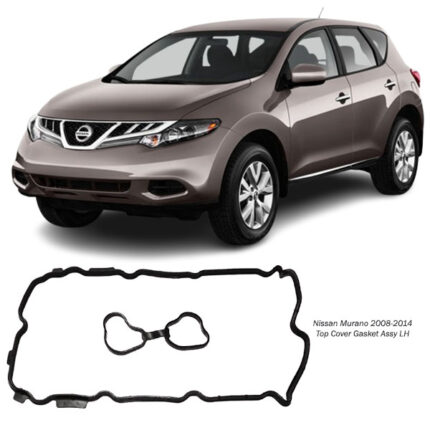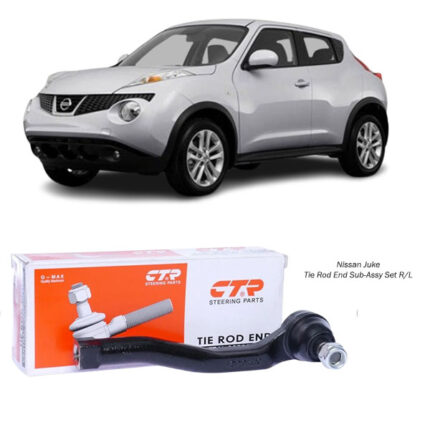-10%
Get Nissan Cube SL 2009-2014 Gasket-Intake Manifold Housing 14035-ED800 in Kenya
The Gasket-Intake Manifold Housing is a crucial component in your vehicle’s engine, ensuring a proper seal between the intake manifold and the engine block or cylinder head. It prevents air, fuel, and coolant leaks, which are essential for maintaining optimal engine performance and fuel efficiency.
If you’re experiencing rough idling, poor fuel economy, misfires, or coolant leaks, a failing Intake Manifold Gasket may be the culprit. Replacing it in time can prevent engine overheating, power loss, and expensive repairs.
In this detailed guide, we will cover:
✔️ What is the Intake Manifold Housing Gasket?
✔️ Functions & Importance
✔️ Common Symptoms of a Failing Gasket
✔️ Materials Used in Gaskets
✔️ Step-by-Step Installation Guide
✔️ Maintenance & Longevity Tips
✔️ OEM vs. Aftermarket Gaskets
What is the Gasket-Intake Manifold Housing? 🤔
The Gasket-Intake Manifold Housing is a sealing component that sits between the intake manifold and the engine block or cylinder head. It ensures a tight, leak-free connection and allows the engine to function efficiently.
Key Components of an Intake Manifold Gasket:
🔹 Gasket Material – Made from rubber, silicone, metal, or composite materials to withstand high temperatures and pressure.
🔹 Sealing Surface – Designed to match the shape of the intake manifold and cylinder head.
🔹 Coolant & Vacuum Passages – Some gaskets include coolant channels or vacuum seals to prevent leaks.
Functions & Importance of the Gasket-Intake Manifold Housing ⚙️
The Intake Manifold Gasket plays a vital role in maintaining engine efficiency. Here’s why it’s important:
1️⃣ Seals the Air-Fuel Mixture for Proper Combustion 🚗
-
Ensures that the correct amount of air and fuel enters the cylinders.
-
Prevents vacuum leaks, which can cause rough idling and poor fuel economy.
2️⃣ Prevents Coolant Leaks & Overheating 🌡️
-
Many intake manifold gaskets have coolant channels. A failing gasket can lead to coolant leaks, causing overheating.
3️⃣ Maintains Proper Vacuum Pressure 🛠️
-
A tight seal ensures the engine maintains the correct vacuum levels.
-
A leaking gasket can lead to hissing noises, performance loss, and check engine lights.
4️⃣ Enhances Fuel Efficiency & Engine Performance ⛽
-
Prevents unmetered air from entering the combustion chamber, ensuring efficient fuel burn.
5️⃣ Protects the Engine from Damage 🚨
-
A broken gasket can cause coolant and oil to mix, leading to severe engine damage.
Common Symptoms of a Failing Intake Manifold Gasket 🚨
The Gasket-Intake Manifold Housing can wear out over time due to heat cycles, engine vibrations, and pressure changes. Here are the most common symptoms of a failing gasket:
🔴 Coolant Leaks or Overheating – A damaged gasket may allow coolant to leak, leading to engine overheating.
🔴 Rough Idling or Engine Misfires – Unsealed gaps cause air leaks, leading to misfires, rough idling, and stalling.
🔴 Poor Fuel Economy – A vacuum leak from a failing gasket can cause the engine to burn more fuel than necessary.
🔴 Check Engine Light (CEL) On – Modern engines have sensors that detect air leaks, misfires, or coolant loss, triggering a CEL warning.
🔴 White Smoke from the Exhaust – If the gasket fails near a coolant passage, coolant may burn in the combustion chamber, producing white exhaust smoke.
🔴 Loss of Engine Power – Leaks cause an imbalance in the air-fuel ratio, reducing overall engine performance and power output.
Ignoring these signs can lead to serious engine issues, including internal damage, overheating, and costly repairs.
Materials Used in Intake Manifold Gaskets 🔬
Different engines require different gasket materials based on temperature, pressure, and engine design.
🔹 Rubber (Silicone or EPDM) – Common in modern engines, offering heat resistance and flexibility.
🔹 Metal (Aluminum or Stainless Steel) – Used in performance vehicles, highly durable and heat-resistant.
🔹 Graphite or Composite – Found in older cars, good at sealing but prone to compression over time.
🔹 Multi-Layered Steel (MLS) – Used in turbocharged and high-performance engines, offering maximum strength.
For long-lasting performance, silicone and metal-reinforced gaskets are highly recommended.
Step-by-Step Installation Guide 🛠️
If your Intake Manifold Gasket is leaking, follow this guide to replace it:
🛠️ Tools Required:
✔️ Socket wrench set
✔️ Screwdrivers
✔️ Torque wrench
✔️ Gasket scraper
✔️ Engine-safe degreaser
✔️ New gasket & optional sealant
✔️ Coolant (if required)
🔧 Installation Steps:
1️⃣ Prepare the Engine
-
Park on a flat surface and let the engine cool down completely.
-
Disconnect the negative battery terminal.
2️⃣ Remove the Intake Manifold
-
Locate the intake manifold and remove any hoses, wiring, and sensors attached to it.
-
Unscrew and remove the bolts securing the intake manifold.
-
Carefully lift off the intake manifold and place it aside.
3️⃣ Remove the Old Gasket
-
Peel off the old gasket from the manifold housing.
-
Clean the mating surfaces with a gasket scraper and degreaser.
4️⃣ Install the New Gasket
-
Place the new gasket onto the intake manifold housing.
-
If required, apply a thin layer of sealant for extra sealing.
5️⃣ Reattach the Intake Manifold
-
Carefully position the intake manifold back onto the engine.
-
Tighten the bolts in a crisscross pattern to ensure even pressure.
-
Use a torque wrench to tighten bolts to manufacturer specifications.
6️⃣ Reconnect Components & Test
-
Reattach all hoses, sensors, and wiring.
-
Start the engine and check for leaks or unusual noises.
-
Take a short test drive to ensure proper performance.
OEM vs. Aftermarket Intake Manifold Gaskets – Which One to Choose? 🤷♂️
When replacing the Intake Manifold Gasket, you can choose between OEM (Original Equipment Manufacturer) and aftermarket options.
| Feature | OEM | Aftermarket |
|---|---|---|
| Fit & Compatibility | ✅ Perfect Fit | ⚠️ May require adjustments |
| Durability | ✅ High-Quality Material | ⚠️ Varies by brand |
| Warranty | ✅ Manufacturer-Backed | ❌ Limited or None |
| Cost | ❌ More Expensive | ✅ More Affordable |
For best performance and longevity, OEM gaskets are recommended. However, a high-quality aftermarket gasket can also be a cost-effective choice.
Final Thoughts 💡
The Gasket-Intake Manifold Housing is a small but crucial component that ensures your engine remains sealed, efficient, and leak-free. Regular inspection, timely replacement, and proper installation will help prevent air leaks, overheating, and costly repairs.
Follow us on Facebook for more parts.




Reviews
Clear filtersThere are no reviews yet.